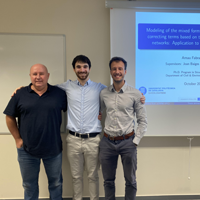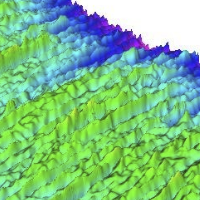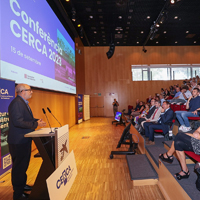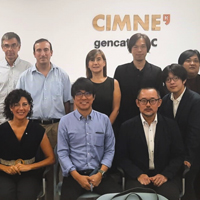news
CIMNE delivers the final technical report on the Brumadinho disaster to the Brazilian Prosecutor´s Office
On January 25, 2019, a mining waste dam of the company Vale SA suddenly collapsed, generating a tsunami of millions of cubic meters of water and toxic mud over the region. It is the biggest environmental disaster in the history of Brazil and 270 people lost their lives in the tragedy.
The Federal Public Ministry of Brazil commissioned a technical study from CIMNE, which has prepared a technical advisory in which it has investigated how the greatest environmental disaster in the history of Brazil occurred.
A CIMNE team, led by Professors Marcos Arroyo and Antonio Gens, has been in charge of preparing a 500-page study that was delivered on October 4 to the Brazilian prosecutor's office._01_(cropped).jpg)
After calibrating the computational model, the parameters of which were determined using all the relevant information obtained from the on-site tests and laboratory tests, a set of numerical analyzes were performed to understand how the dam collapsed.
The numerical analyzes carried out in the study conclude that "the drilling of well B1-SM-13 is a potential trigger for the liquefaction that caused the dam to fail."
"Examinations of the CPTu tests near the wells show that the soil profile at the B1-SM-13 well site was especially unfavorable with respect to the onset and spread of liquefaction." As a result, the breakage caused by a laundry that had filled the Maracanã football stadium six times could have started in a very small area inside the dam, with a volume not much greater than that occupied by a closet.
.@cimne delivers the final technical raport to the Brazilian Office of the Public Prosecutor. The numerical analyses carried out by @cimne scientists conclude that "the drilling of well B1-SM-13 is a potential trigger for the liquefaction that caused the dam to fail." pic.twitter.com/qrfQ9cH2JF
— CIMNE (@cimne) October 6, 2021
Related items
-
20/12/2023The CIMNE Evaluation Committee for the Prioritisation of Candidates for the Joan Oró Grants f...
-
21/11/2023Professor Karen Willcox, director of the Oden Institute for Computational Engineering and Sciences, ...
-
10/11/2023On 28 November, Fatigue4Light, a project coordinated by CIMNE to develop lightweight solutions adapt...
-
09/11/2023In mid-October, CIMNE researcher Arnau Fabra defended his doctoral thesis entitled Modeling of the m...
-
26/10/2023EN-TRACK will participate in the upcoming Smart City Expo World Congress, to be held in Barcelona fr...
-
26/10/2023In mid-September, CIMNE researcher Pere Andreu Ubach took part in a conference on sand management fo...
-
20/10/2023On October 9th, the Abertis Chair Spain, associated with the Universidad Politécnica de ...
-
17/10/2023CIMNE participates in the meeting of UNESCO Chairs to discuss the challenges of higher education. Ce...
-
17/10/2023CIMNE participates in the SuPreAM partnership. This is an EU-funded project to develop and improve t...
-
11/10/2023Carlos Moreira is a CIMNE researcher from Brazil. He holds a Master of Science in Structural Enginee...
-
09/10/2023We look forward to receiving your proposal and collaborating with you in this exciting research oppo...
-
19/09/2023The researcher from the CENIT Group for Innovation in Multimodal Transport at CIMNE, Samra Sarwar, h...
-
18/09/2023The Catalan research centres, in collaboration with the Government of Catalonia, gathered within the...
-
15/09/2023LAIF is a predictive aquatic surveillance system that works using computer vision technology. It ana...
-
14/09/2023On September 8th, 2023, a Japanese delegation from the Earth Disaster Intelligent System & Opera...
-
14/09/2023NextGEM, an EU project dedicated to promoting the safety of EMF-based telecommunication technologies...
-
12/09/2023Fibregy, a pioneering European research project dedicated to revolutionizing offshore energy platfor...
-
08/09/2023By mid-July, the research consortium of the EU-funded project EN-TRACK announced the first public re...
-
04/09/2023We interviewed Xavier Tort Farrés, a newcomer researcher at CIMNE. This summer, he joined the...
-
22/08/2023If you obtained your PHD between the 5th of October, 2016 and the 5th of October, 2021 thi...






















